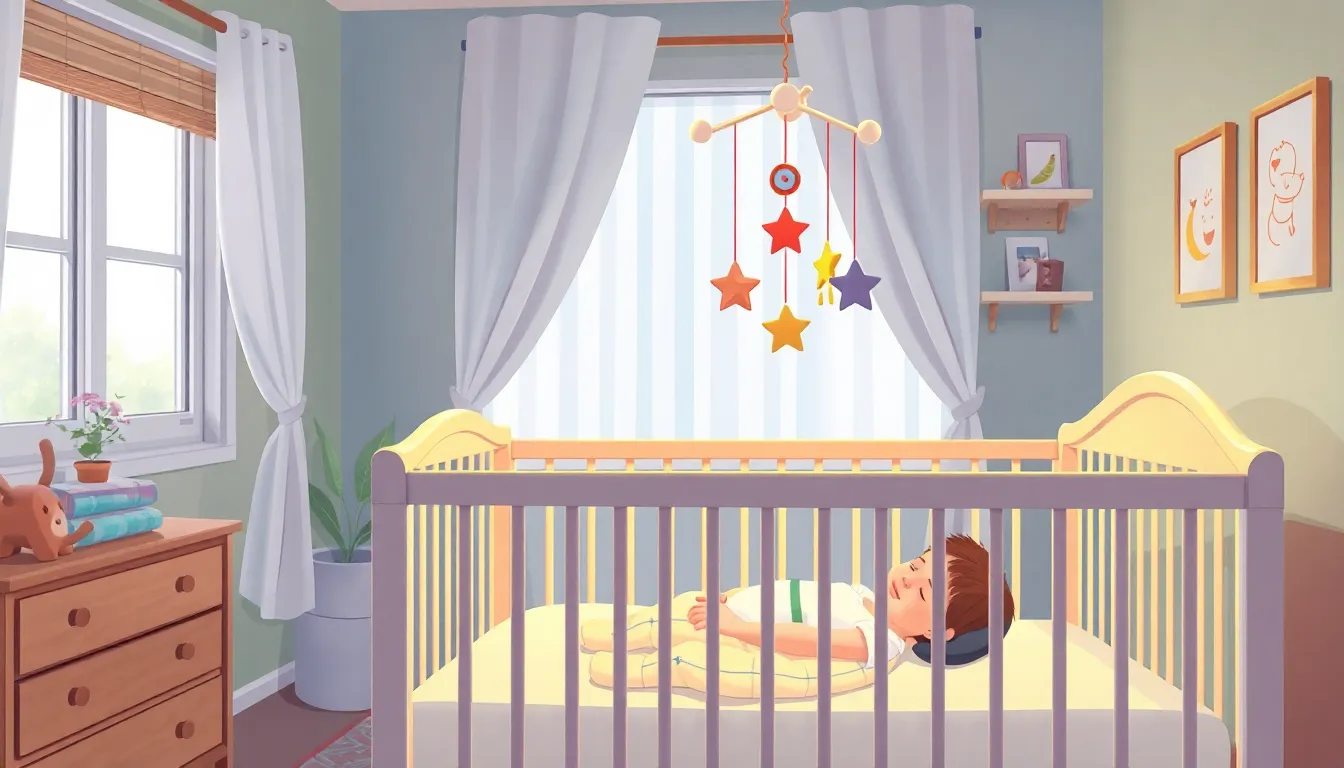Table of Contents
ToggleNavigating the world of toddler sleep can feel like trying to solve a Rubik’s Cube blindfolded. One minute, they’re bouncing off the walls like tiny pinballs, and the next, they’re out like a light at the most inconvenient times. Establishing a solid sleep schedule isn’t just a luxury; it’s a necessity for parents and their pint-sized tornadoes.
A well-structured sleep routine can transform those chaotic nights into peaceful slumbers. Not only does it help toddlers recharge their batteries, but it also gives parents a much-needed break. So, if you’re ready to swap bedtime battles for sweet dreams, buckle up! It’s time to dive into the secrets of creating a toddler sleep schedule that even the most stubborn little night owls will embrace.
Understanding Toddler Sleep Schedule
Establishing a toddler sleep schedule fosters better rest and manages parental stress. A routine can create a sense of security and predictability for young children.
Importance of a Consistent Sleep Schedule
A consistent sleep schedule promotes restful nights for toddlers and parents. Regular sleep patterns help regulate a child’s internal clock, leading to improved mood and behavior during the day. Research indicates that toddlers who follow a routine fall asleep more easily and wake up less frequently. Better sleep supports cognitive development and emotional regulation. Parents can enjoy evenings free from bedtime struggles when a routine is in place.
Common Sleep Patterns in Toddlers
Toddlers typically require 11 to 14 hours of sleep in a 24-hour period, including naps. Most children at this age may still need one or two daytime naps, generally lasting 1 to 3 hours each. Sleep onset usually occurs between 7:00 PM and 8:30 PM, with wake times around 6:00 AM to 8:00 AM. Many children exhibit sleep regressions, often triggered by developmental milestones. Changes in sleep may occur as toddlers transition between nap phases. Consistent schedules can help navigate these fluctuations effectively.
Ideal Sleep Duration for Toddlers


Understanding a toddler’s sleep needs is crucial for establishing a healthy sleep routine. Toddlers typically require 11 to 14 hours of sleep in a 24-hour period, including naps.
Age-Specific Sleep Requirements
Toddlers aged 1 to 2 years usually need around 12 to 14 hours of sleep daily. Between 2 and 3 years, sleep requirements often decrease slightly to about 11 to 13 hours. Children approaching 3 years may transition from two naps to one longer nap in the afternoon. Notably, sleep duration varies with individual needs, but consistent schedules support better rest for toddlers.
Naps vs. Night Sleep
Naps play a significant role in a toddler’s overall sleep. Most toddlers take one to two naps daily, gradually transitioning to one nap as they approach preschool age. Night sleep typically begins between 7:00 PM and 8:30 PM, aligning with their biological rhythms. During nighttime, uninterrupted sleep fosters better cognitive development and emotional regulation. Balancing naps and nighttime rest is essential for maintaining a well-rounded sleep schedule.
Creating a Sleep-Friendly Environment
Establishing a sleep-friendly environment is crucial for promoting restful sleep in toddlers. By creating the right conditions, parents can help their children settle down more easily.
Optimal Sleep Conditions
Darkness plays a significant role in facilitating sleep. Using blackout curtains blocks disruptive light from outside. Room temperature should remain comfortable, ideally between 68°F and 72°F. Quiet surroundings contribute positively as well; a white noise machine can mask disruptive sounds. Comfortable bedding and a snug crib or bed enhance feelings of safety, which encourages relaxation. Soft, soothing colors in the room décor can also promote a sense of calm. An organized sleep space free from clutter helps maintain focus on sleep, leading to better rest overall.
Strategies for a Calming Bedtime Routine
Establishing a bedtime routine is vital. Consistent activities signal to toddlers that it’s time to wind down. Parents can start with a warm bath to relax muscles; this can be followed by reading a story in soft lighting. Engaging in quiet time with gentle music enhances the calming atmosphere. Limit screen time at least one hour before bed to avoid overstimulation. Allowing toddlers to choose a favorite stuffed toy to sleep with can provide comfort and security. Gradually transitioning from playtime to sleep prepares children mentally for bedtime, easing the night-time process.
Common Sleep Challenges
Managing sleep challenges in toddlers can feel overwhelming for parents. Two prevalent issues often arise: nightmares and night terrors, along with the transition from cribs to beds.
Nightmares and Night Terrors
Nightmares often occur during the REM sleep phase and can disturb a toddler’s sleep cycle. Children aged 2 to 6 years frequently experience these unsettling dreams, often leading to wakefulness and fear. Night terrors, however, typically happen during deep sleep and may cause children to scream or thrash about without full awareness. They usually occur in the early night hours and can be alarming for both the child and the parent. Understanding that these experiences are common can help parents reassure their toddlers and maintain a sense of stability. To minimize nightmares and night terrors, establishing a calming bedtime routine is crucial.
Transitioning from Cribs to Beds
Transitioning from cribs to beds often poses a challenge. Many toddlers resist the change due to the sense of security cribs provide. It’s common for children to feel excitement and anxiety about their new sleeping arrangement. Preparing toddlers for the switch can smooth the process. Implementing the change during a calm period, such as after a vacation or major life event, promotes a smoother transition. Additionally, involving toddlers in choosing bedding or decor creates a sense of ownership and comfort. Ensuring they understand the significance of staying in bed fosters a sense of responsibility during this transition.







